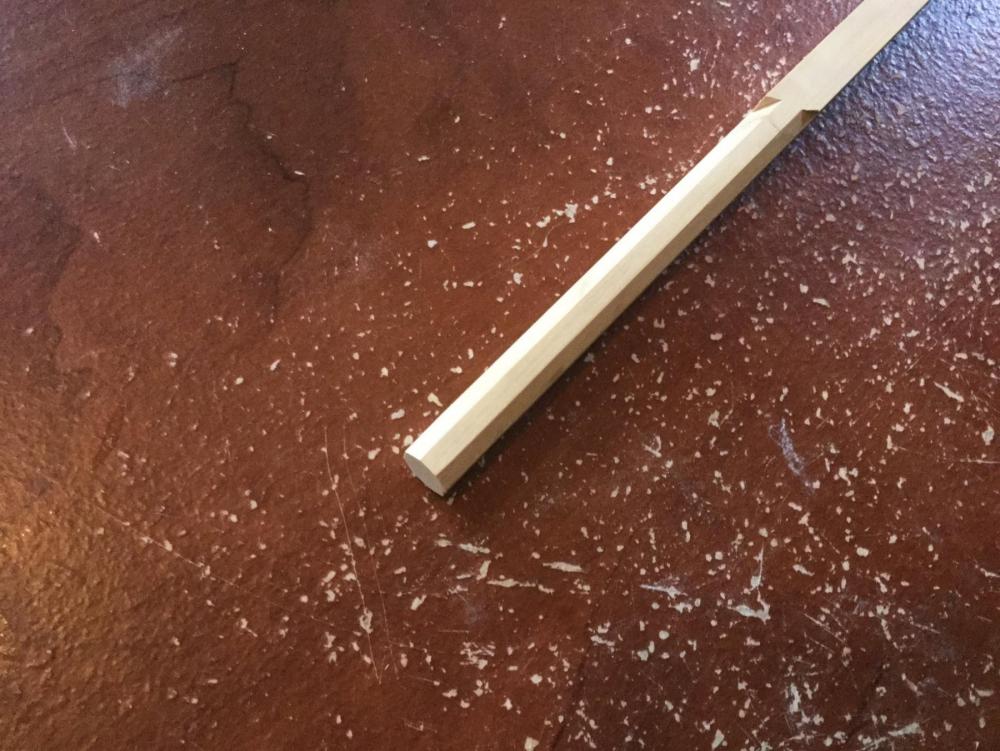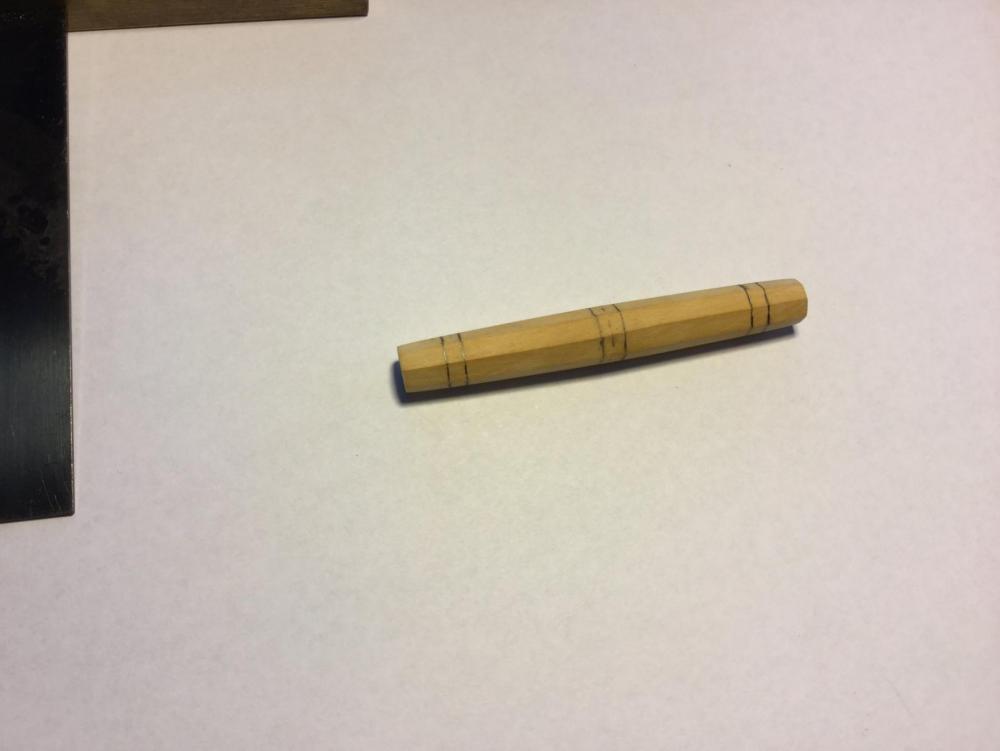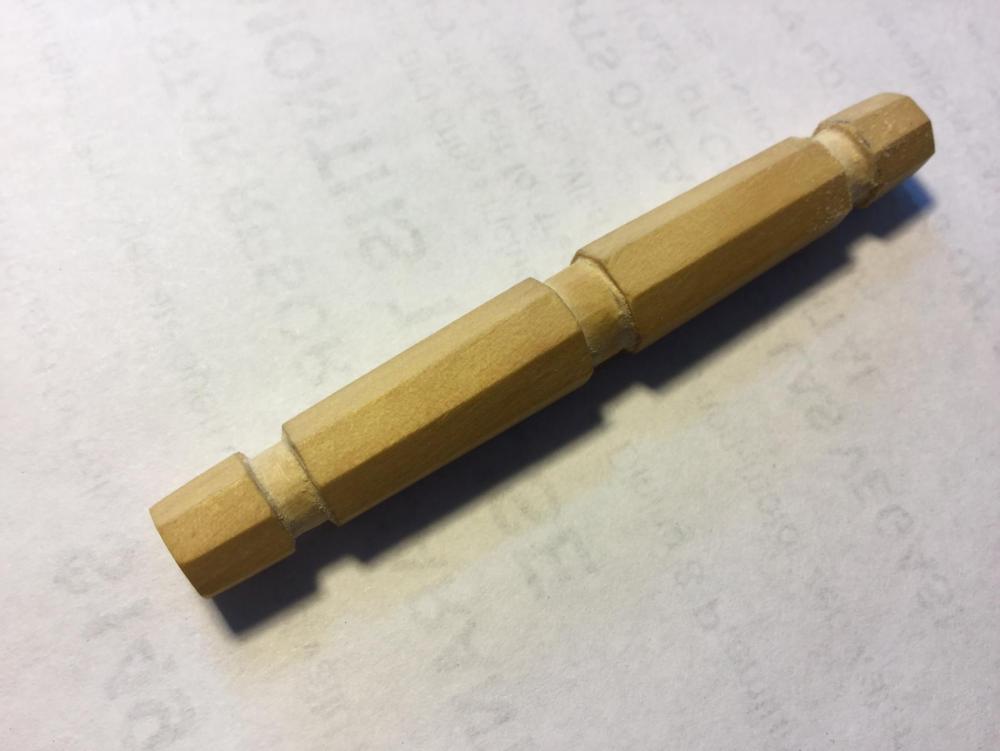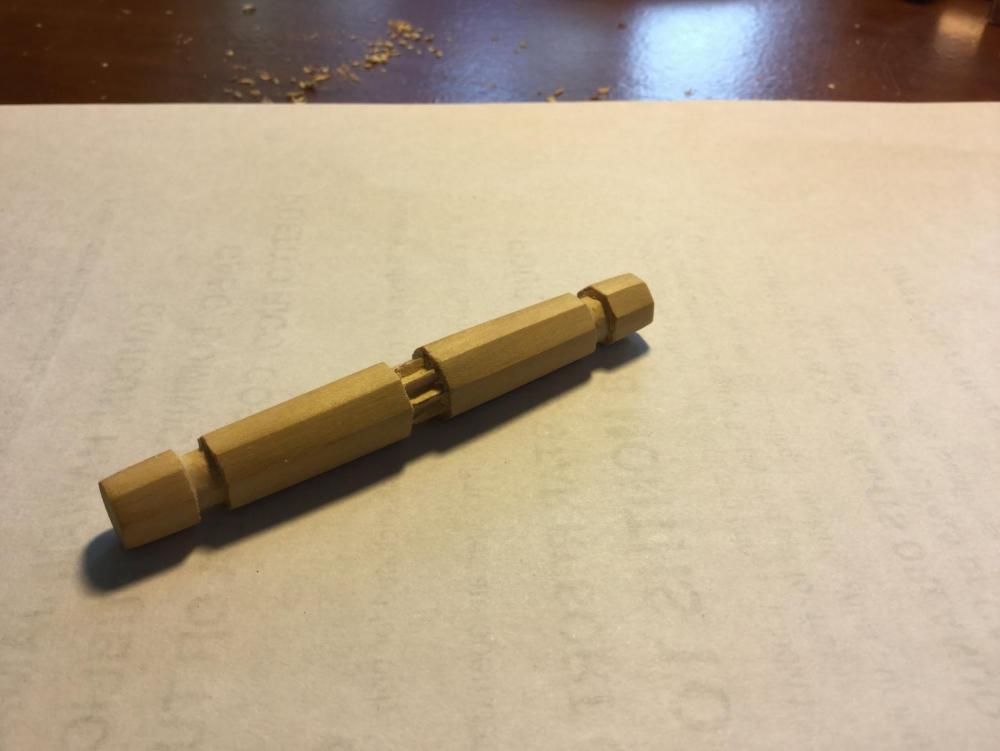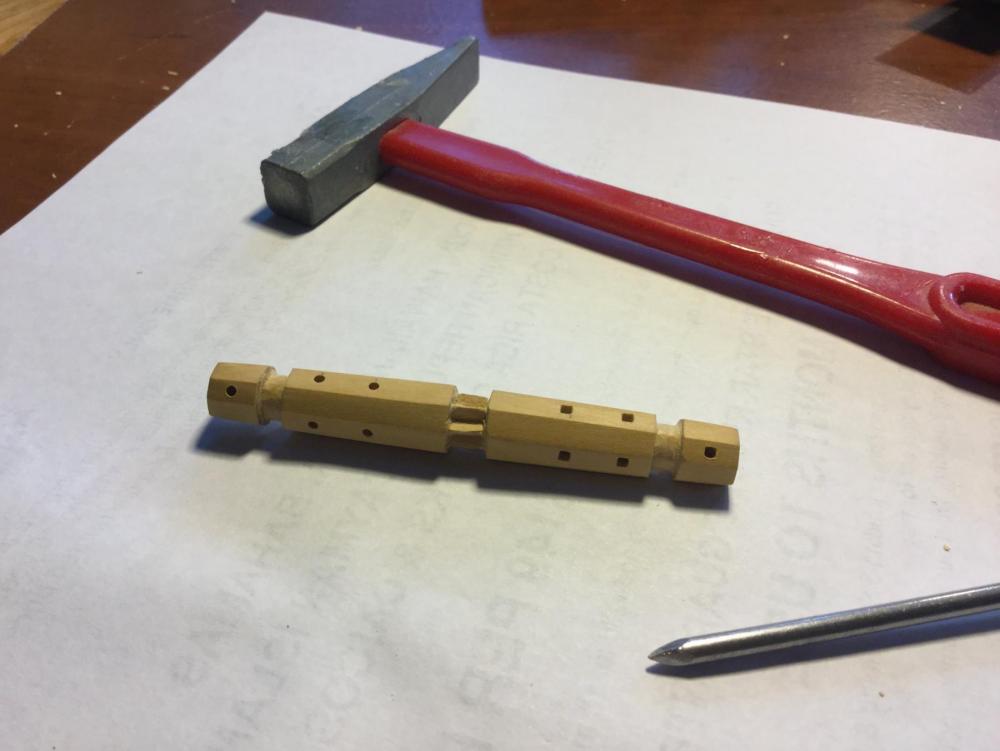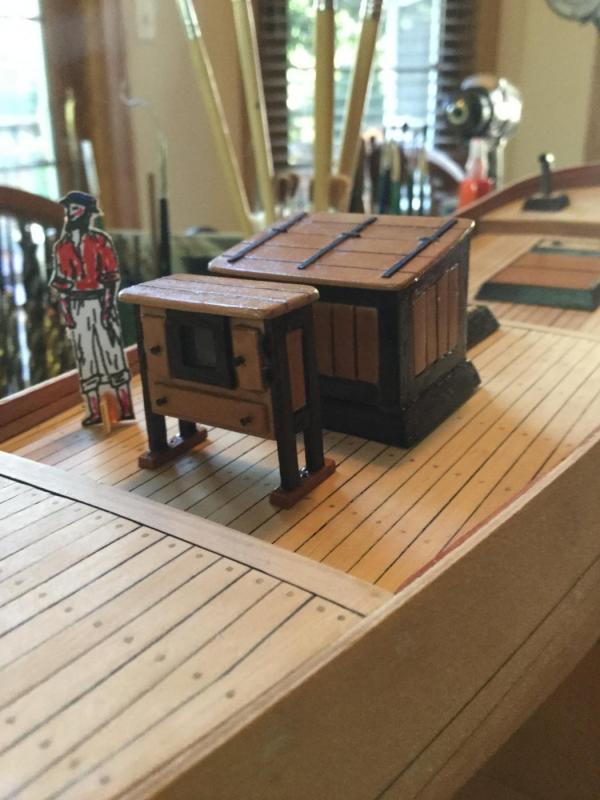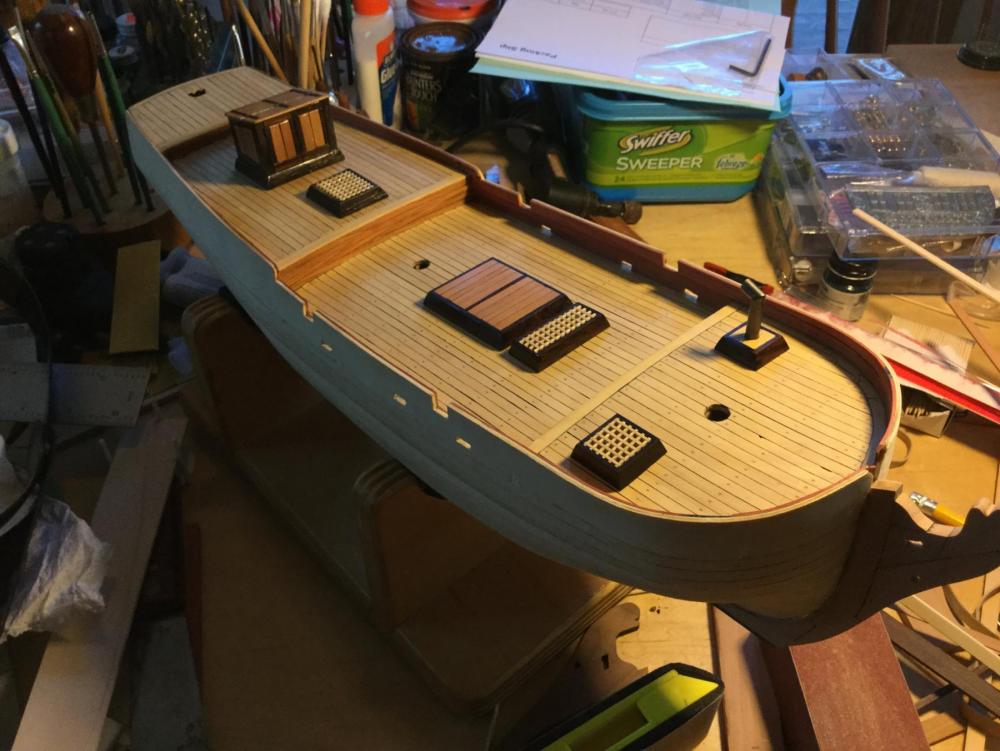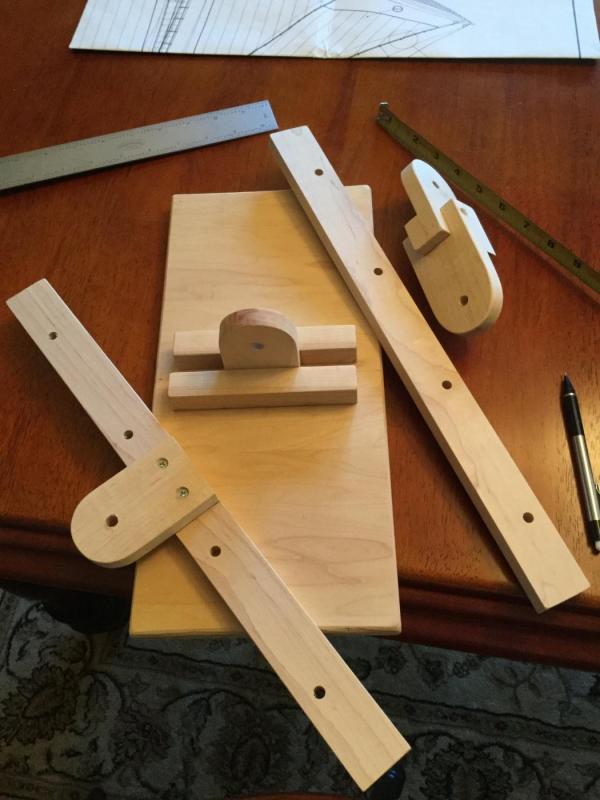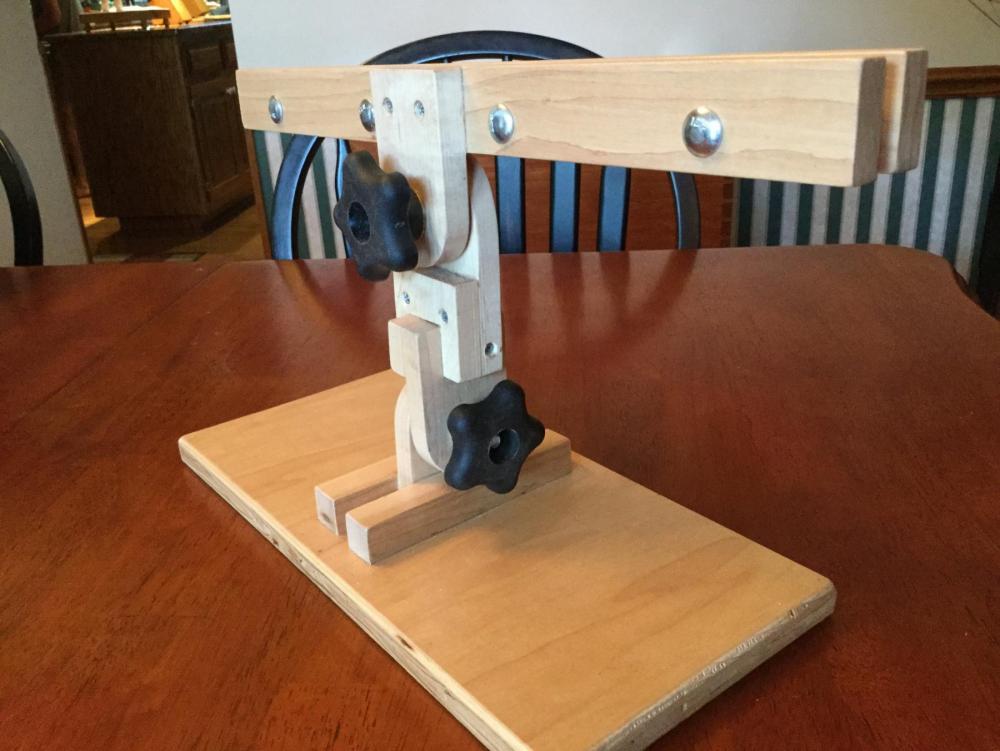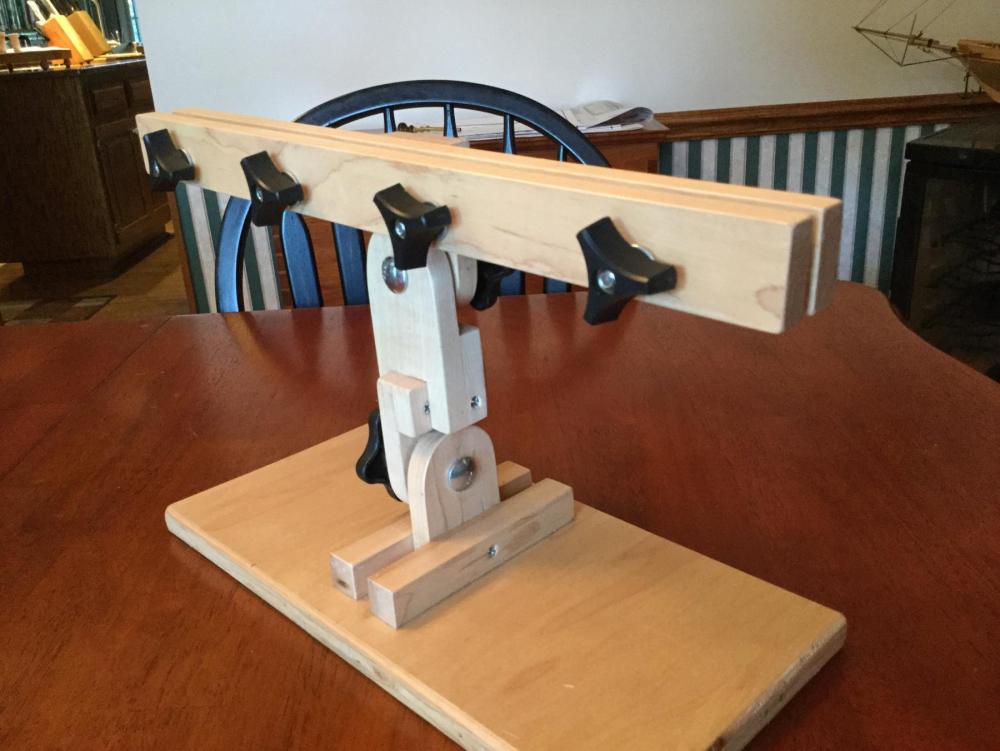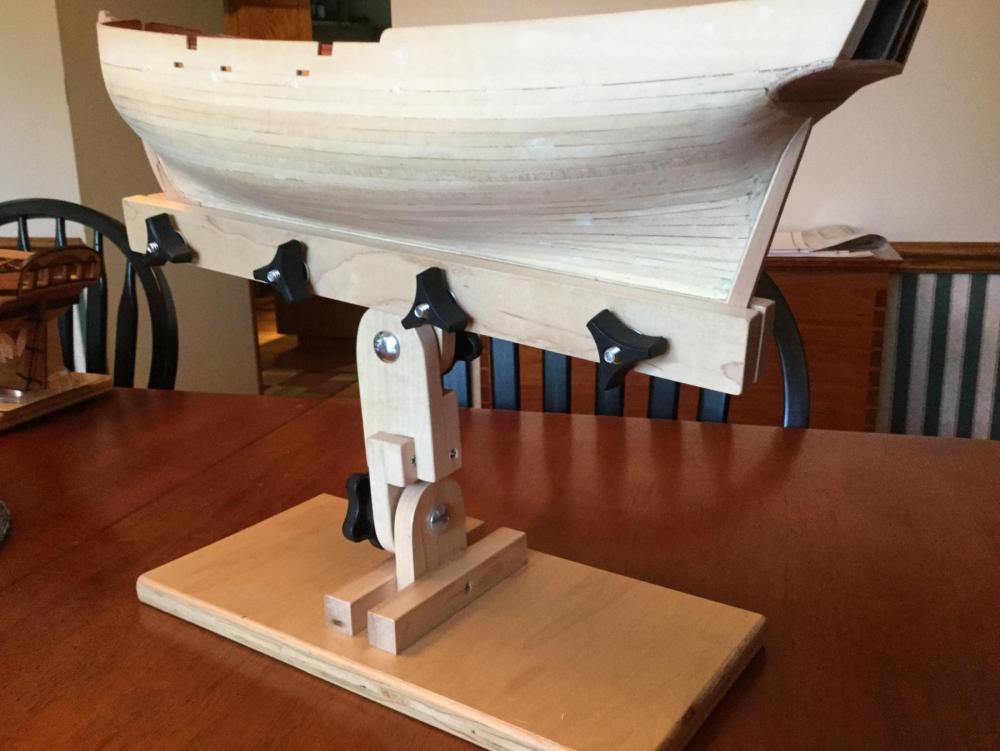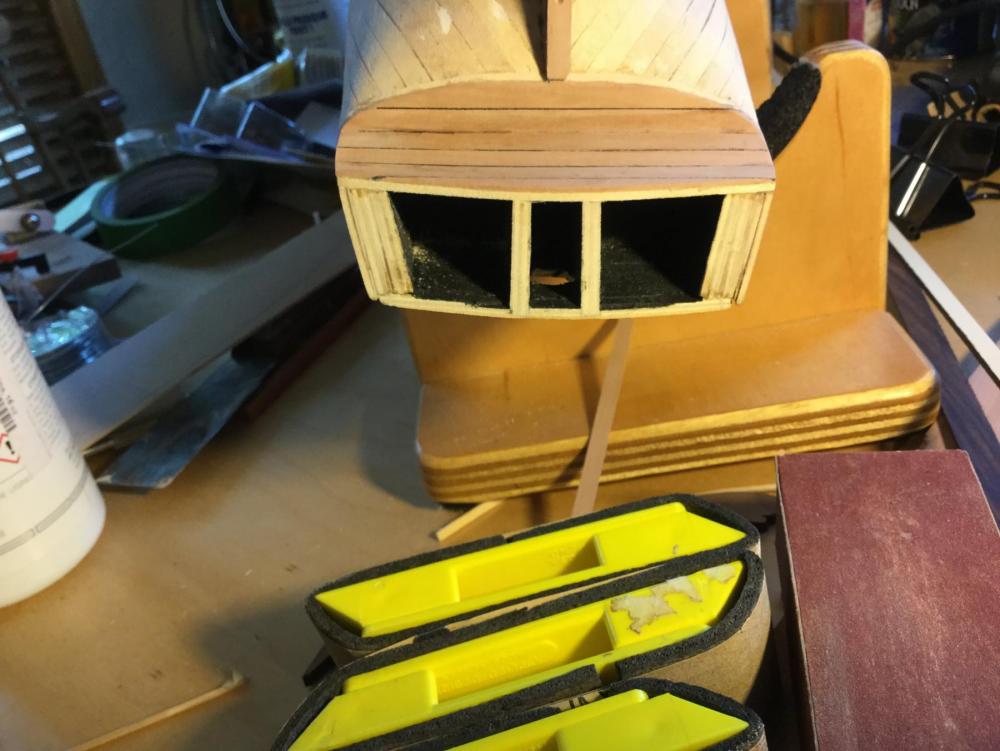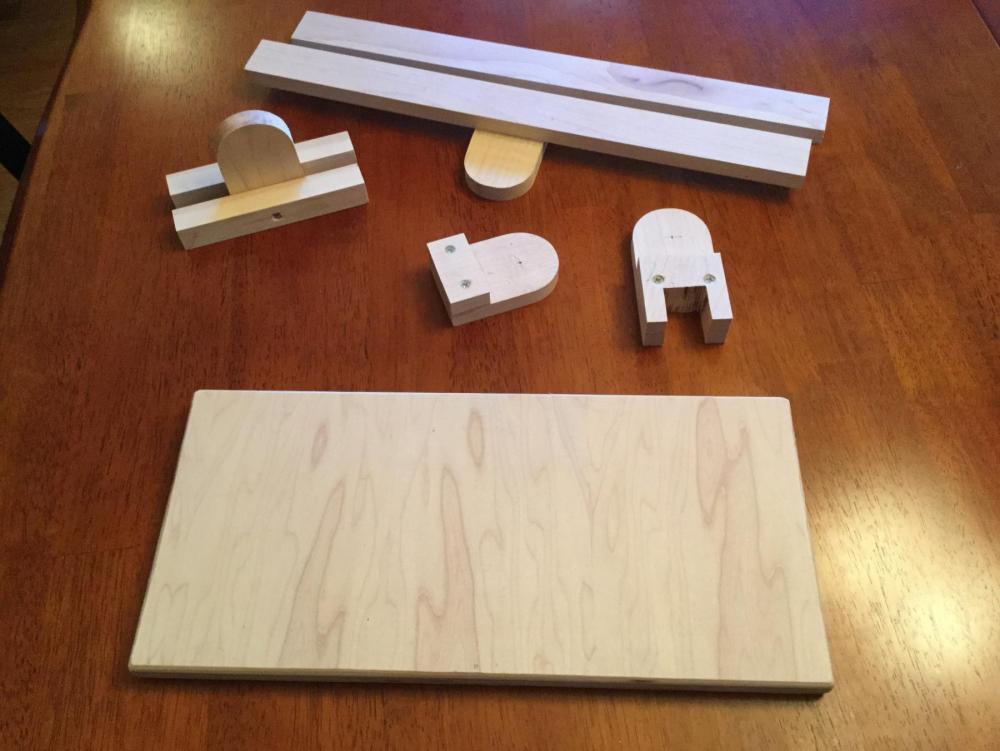-
Posts
1,811 -
Joined
-
Last visited
Content Type
Profiles
Forums
Gallery
Events
Everything posted by DocBlake
-
Guys: The bleeding problem from inks (like Sharpie ink) is mostly a function of what you coat it with. If you stain the wale black, glue it in place and then finish it in poly, the poly will redissolve the Sharpie ink, and bleeding will occur. A trick to prevent this is to use a solvent for that first finish coat that can't redissolve the ink : Water! Use a coat of water-based polyurethane as your first finish coat. It will seal the wood, and conventional poly can be used after that coat with no bleeding. In general I try to avoid water-based polys for furniture work because I think they make the wood look "cold". They work in this context, though! Minwax makes a water-based poly that comes in small cans.
- 194 replies
-
- armed virginia sloop
- model shipways
-
(and 1 more)
Tagged with:
-

Making Fire buckets
DocBlake replied to steamschooner's topic in Metal Work, Soldering and Metal Fittings
Awesome job! -
Here is a series of photos showing how I approached building the windlass. I took a piece of boxwood 3/8" square and cut it into an octagon on my table saw. The piece was cut to 3" in length (about 9'8" in scale). I measured in about an 1-1/8" from each end, and tapered the boxwood by sanding, maintaining the octagon profile. I measure and marked the rabbets for the supports and the center gear. They are all about 1/16' deep. Next, I cut the gear in the center to shape, using a #10 X-Acto blade. Last, I laid out where the holes for the lever rods would go and drilled 1/16" pilot holes at each location. I then took a nail that I had previously filed to a square point and tapped it into each hole, converting the round drill holes into square holes. In the photo, the holes on the left side of the windlass are still round, Tomorrow the supports!
-
Thanks, guys! The shipyard has been idle for awhile due to my being assigned by the Admiral to several other projects. Back at it soon, as we move into fall.
- 306 replies
-
- armed virginia sloop
- Patrick Henry
-
(and 2 more)
Tagged with:
-
Very innovative, John. I admire your ingenuity. The planking looks great!
- 194 replies
-
Philadelphia is in my queue also! Happy Birthday.
- 701 replies
-
- phantom
- model shipways
-
(and 1 more)
Tagged with:
-
Nice job. With filler and sanding, a nice solid base for the second layer.
- 194 replies
-
- armed virginia sloop
- model shipways
-
(and 1 more)
Tagged with:
-
While waiting for my Byrnes thickness sander (which I used to mill the hull planking) I started on some of the deck furniture. I finished the hatches, and added one to lead the anchor lines below. I enlarged the companionway from the plan specs. I need to add iron ring pulls for the doors. The most important change was to fabricate a galley stack from brass. The plans actually call for a "smoke stack" made of walnut! Tha ship would have caught fire after serving the crew their first dinner aboard! I still need to complete the binnacle, windlass, bits and ladders etc. The woods used are rosewood, boxwood and swiss pear.
-
I assembled my keel clamp. The first task was to drill the holes for the carriage bolts which form the pivot points. They are 5/16", except for the keel clamp itself which has four 1/4" carriage bolts. The two knuckles that form the 2 axes of rotation were glued and screwed together, and the lower axis piece was glued and screwed to the base. All the parts were given 3 coats of water-based polyurethane. There are washers between adjacent wooden parts and where the through star nuts tighten down. I had most of the hardware on hand, but if you went to purchase it, it would be about $20 as I've built it. If you substitute plain old metal thumb screws, the hardware should be under $5! The clamp is very stable, even with a model in place due to the large base, but one might consider clamping it to the table top for safety. It is a little top-heavy!
-
Don: Beautiful job on the planking! I love the color of the hull. The variation in plank color only adds to the model. Well done!
- 653 replies
-
- trabakul
- marisstella
-
(and 1 more)
Tagged with:
-
I'm getting ready to plank the hull. I need to establish the wales first, but before that I needed to plank the counter. I used 1/32" thick swiss pear, 7/32" wide. Because I need to establish a waterline for my "two-tone" planking of the hull, I decided I needed a keel clamp. Rather than buy one, I spent the afternoon today cutting out the parts out of some 1/2" hard maple I had on hand. I'll assemble it tomorrow. I have most of the hardware on hand, but you can build this for less than $5 if you have some 1/2' hardwood around. I'll post photos of the finished keel clamp tomorrow.
-

Frigate Boston by overdale - FINISHED
DocBlake replied to overdale's topic in - Build logs for subjects built 1751 - 1800
Very nicely done. A beautiful model! -
The planking is looking good so far!
- 194 replies
-
- armed virginia sloop
- model shipways
-
(and 1 more)
Tagged with:
-
I just watched Chuck's two planking videos again. Did he make a third showing how he laid out the planking plan on the hull before starting?
- 194 replies
-
The time taken in prep work will pay big dividends, John. You're on your way to a beautiful hull!
- 194 replies
About us
Modelshipworld - Advancing Ship Modeling through Research
SSL Secured
Your security is important for us so this Website is SSL-Secured
NRG Mailing Address
Nautical Research Guild
237 South Lincoln Street
Westmont IL, 60559-1917
Model Ship World ® and the MSW logo are Registered Trademarks, and belong to the Nautical Research Guild (United States Patent and Trademark Office: No. 6,929,264 & No. 6,929,274, registered Dec. 20, 2022)
Helpful Links
About the NRG
If you enjoy building ship models that are historically accurate as well as beautiful, then The Nautical Research Guild (NRG) is just right for you.
The Guild is a non-profit educational organization whose mission is to “Advance Ship Modeling Through Research”. We provide support to our members in their efforts to raise the quality of their model ships.
The Nautical Research Guild has published our world-renowned quarterly magazine, The Nautical Research Journal, since 1955. The pages of the Journal are full of articles by accomplished ship modelers who show you how they create those exquisite details on their models, and by maritime historians who show you the correct details to build. The Journal is available in both print and digital editions. Go to the NRG web site (www.thenrg.org) to download a complimentary digital copy of the Journal. The NRG also publishes plan sets, books and compilations of back issues of the Journal and the former Ships in Scale and Model Ship Builder magazines.



